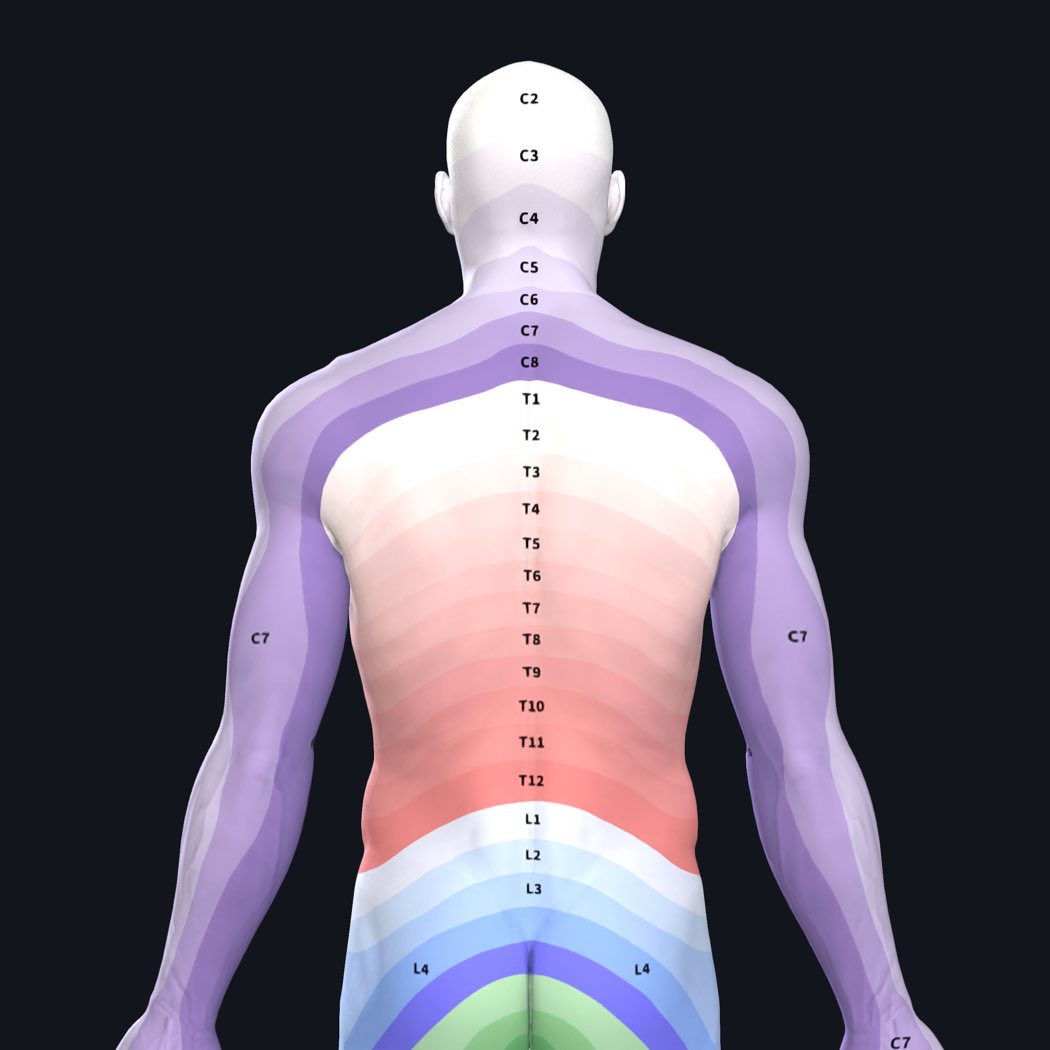
Our skin contains millions of receptors which allow us to feel pain, touch, pressure and even temperature. Free nerve endings make up the vast majority of receptors and are responsible for temperature sensation and light touch, while tactile corpuscle receptors are primarily responsible for light touch, which allows us to understand the feel of textures and shapes such as Braille.
These small receptors react to different stimuli which allow us to build up a complete picture of sensation. The stimuli induce an action potential (a change in electrical potential across the membrane allowing impulses to travel along the nerve axons) through peripheral nerves located throughout the body.
These peripheral nerves carry the action potential towards the spinal nerves, which in turn bring the action potential and information regarding the stimuli back to the central nervous system for processing.
Each spinal nerve corresponds to a very specific area of skin. For example, the C7 spinal nerve supplies the posterior and medial portion of the arm whereas the S1 spinal nerve supplies the lateral side of the ankle. These spinal nerves have been mapped out to create a dermatome map.
The dermatome map can be useful in a clinical context to help diagnosis. Here are some examples:
- If the herpes zoster virus affects a spinal nerve, usually the dermatome which that nerve supplies will be affected by either a pain or rash.
- If the median nerve is compressed due to carpal tunnel syndrome, a tingling sensation or pain can be felt on the palmar side of the hand, extending from the index finger, thumb, middle finger and half of the ring finger.
Question time! Can you explain why the dermatomes of the facial skin are unique?
